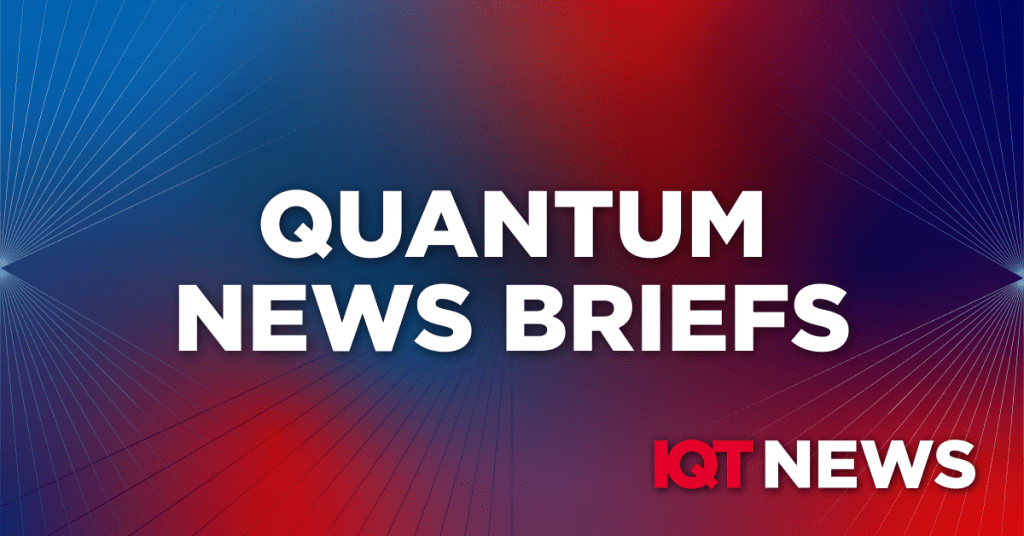Singtel Expands Suite of Quantum-Safe Offerings to Protect Enterprises
Singtel says this involves integrating Post-Quantum Cryptography (PQC) technology, which is algorithms engineered to resist the computational power of attacks from quantum computers, from leading cybersecurity solutions providers, Palo Alto Networks and Fortinet, into Singtel’s nationwide Quantum Safe Network (QSN).
As part of the collaboration, Palo Alto Networks will protect against quantum threats with a PQC IPSec (Internet Protocol Security) virtual private network (VPN), using the new post-quantum encryption standards established by the United States National Institute of Standards and Technology for secure data transmission and authentication.
85% of India’s Industry Leaders Call for Major Investments in Quantum Computing
Investment in research and development (R&D) ranks highest with 74.5 per cent of respondents calling for substantial funding increases to drive quantum technology innovation and secure India’s competitive position globally,
Skilled workforce development is also pivotal at 61.7 per cent.
Devroop Dhar, Co-founder and Managing Director of Primus Partners pointed out, “. . .Our survey clearly indicates that industry leaders recognise the urgent need for investment and development in this field. . .””..
Ericsson & Government of Canada Deal Invests More than Half a Billion Canadian Dollars into R&D for Mobile Networks, AI, & Quantum Technologies
This funding increase will further enhance Ericsson’s R&D capabilities at its research facilities in Ottawa and Montreal creating and upskilling hundreds of jobs and internships and strengthening these sites as global leaders in 5G Advanced, 6G, AI, Cloud RAN, quantum, and network API technologies.
François-Philippe Champagne, Minister of Innovation, Science and Industry, explained: “Our partnership with Ericsson solidifies Canada’s position as a leader in next-generation networks. With the increased investment, we’ll not only support the 5G networks of today, but also advance the technologies that will shape our future and continue to make Canada a leader in these areas.”
Ericsson’s R&D centres in Montreal and Ottawa will focus on the development of quantum
IonQ and NKT Photonics Team Up for Quantum Lasers
NKT Photonics will supply fiber laser-based technologies designed for modularity, reliability, and rack-mount integration, crucial for data center deployment. These laser systems will address
• Partnership for next-generation laser systems in quantum computing
• NKT Photonics to deliver three prototype optical subsystems to IonQ in 2025
• Systems will support IonQ’s Tempo and future barium-based quantum systems
• Fiber laser technology offers improvements in cost, size, weight, and power (SWAP)
• IonQ recently opened a quantum computer manufacturing facility in the U.S.
Compact Error Correction: Towards a More Efficient Quantum ‘Hard Drive’
Their innovative theoretical approach promises to not only enhance the reliability of quantum information storage but also significantly reduce the physical computing resources needed to create ‘logical qubits’ (or ‘quantum switches’ that can perform useful calculations). This should lead to the development of a more compact “quantum hard drive”. The study has been published in Nature Communications.
Lead author Dr Dominic Williamson from the University of Sydney Nano Institute and School of Physics said: “There remain significant barriers to overcome in the development of a universal quantum computer. One of the biggest is the fact we need to use most of the qubits – quantum switches at the heart of the machines – to suppress the errors that emerge as a matter of course within the technology.
“Our proposed quantum architecture will require fewer qubits to suppress more errors, liberating more for useful quantum processing,” said Dr Williamson, who is currently working for 12 months as a quantum researcher at IBM.
At the heart of their theoretical architecture is a three-dimensional structure that allows for quantum error correction across two-dimensions. Current error correction architecture, also constructed within a 3D system of qubits, works to reduce errors in just one dimension along a single line of connected qubits.
Error correction is performed by writing code that operates through the qubit structure, a latticework of how the ‘quantum switches’ are organised. The objective is to win an ‘arms race’ where physical qubits are used to suppress errors as they emerge, by using as few qubits as possible to reduce errors.
